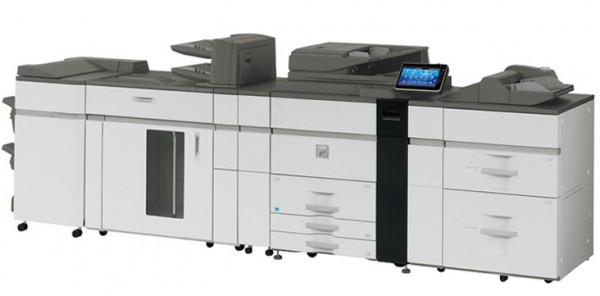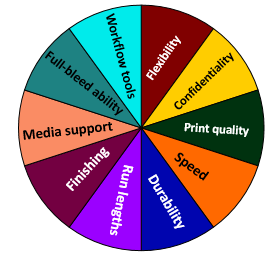 In-house light production devices offer a wide array of benefits to organizations across business sectors. This blog post will discuss 10 of those benefits, with an emphasis on how they go beyond outsourced and office-class arrangements.
In-house light production devices offer a wide array of benefits to organizations across business sectors. This blog post will discuss 10 of those benefits, with an emphasis on how they go beyond outsourced and office-class arrangements.
10 benefits of in-house light production

- Flexibility
Having a light production device in-house allows you to print when you want at a fixed cost. Outsourcing this type of job, on the other hand, may introduce challenges around turnaround time and pricing—particularly when a job is needed quickly.
- Confidentiality
Printing on site helps ensure your corporate data does not get into the wrong hands. Most likely a print service provider would not sell your information to a competitor, but the chances for a potential confidentiality breach are certainly higher.
- Print quality
Light production devices go beyond the capabilities of office-class printers to deliver outstanding print quality. This is achieved through such feature as color matching, calibration, and control—often with the use of an internal color spectrophotometer.
- Speed
Light production products also tend to deliver faster print speeds than office printers and copiers. Keypoint Intelligence/InfoTrends considers 70 pages per minute to be the minimum print speed of a light production device. Fast speeds are particularly important in high-volume environments.
- Durability
Compared to office-class products, light production machines can handle more printing in a given month. Color machines tend to have a duty cycle of between 101,000 and 300,000 pages a month, though some are capable of up to 500,000 pages a month. That’s 1,000 reams of paper.
- Run lengths
Large print jobs can run with little interruption. This is enabled by features like 7,000-plus sheet capacity that require minimal user intervention. While many high-end office systems offer high-capacity drawers, this is generally a standard feature on light production systems.
- Finishing
With a light production printer, you can perform such functions as stapling, saddle stitching, hole punching, folding, trimming, and stacking. You can produce create perfectly bound documents, including lay-flat books and full-bleed books.
- Media support
Light production systems often support the use of heavier paper stocks as well as coated and uncoated stock. Other commonly supported media include plastic, cling (used to make items like window decals and stickers), magnets, and textured linen.
- Full-bleed capability
Some print jobs look better with no margin or border, including marketing brochures and related collateral. Light production devices may offer full-bleed capability, allowing printing to extend to the edges of the paper.
- Workflow support
Today’s light production printers generally have several types of software embedded in the control panel, including software for controlling job characteristics and job submission. These capabilities can clean up pages, check and correct colors, and prepare documents to accommodate finishing.
Next steps
If these benefits seem attractive for your organization, you are encouraged to consider investing in a light production machine.
Give us a call and our team will help answer any questions you have and take you through our light production product line.
